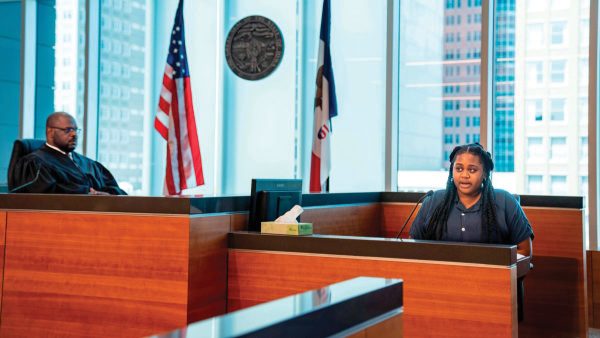Trump places “America First”
Nov 1, 2018
Last week, President Trump said to a crowd at a rally in Houston, Texas at the Toyota Center: “You know what I am? I’m a nationalist, okay? I’m a nationalist,” which prompted much outcry from his opponents on the left and in the mainstream American media. One of his most well-known critics, CNN’s Jim Acosta, has said that he thinks Trump is implying that he is actually a white nationalist. A USA Today article from Oct. 24 states “‘I am a nationalist’: Trump’s embrace of controversial label sparks uproar.” Stephen Colbert went on his late-night CBS show to say, “You know why you’re not supposed to use that word? Because it’s the second half of ‘white nationalists.”
What Trump said should come as no surprise to anyone who pays even the smallest bit of attention to the news. Ever since he began his campaign back in June of 2015, Trump has frequently stated that America needs to focus more on our problems here at home rather than fixing problems for other countries. In other words, the term “nationalist” is the idea that you are proud of your own country and culture, and the thought that your own nation takes priority over the needs of other nations, or as the well-known Trump phrase goes, “America First.” This is what Trump is talking about when he calls himself a nationalist. It’s another way for him to say he’s proud of America and wants to focus on our best interest as a nation moving forward. Or, the idea that we need to fix our own problems here at home before we put other nations in front of America.
The dominant media in America has hijacked the term “nationalist” and turned it into another term for racism and white nationalism. It’s sort of become a dirty word, and to see the President of the United States proudly call himself that sent shockwaves through his critics. However, Trump has done a lot more than just call himself a nationalist on TV and during campaign rallies: he’s actually done things as President to back up the term “America First.” All throughout his presidential campaign, he would speak of things such as “unfair trade deals” and “trade deficits with China and other countries,” and he acted on these soon after being inaugurated.
On Jan. 23 of 2017, three days after he became the president, Trump signed an executive order withdrawing the United States from the Trans Pacific Partnership (TPP), calling it a trade deal that will “increase our trade deficits and send even more jobs overseas” and saying “Great thing for the American worker, what we just did,” after his decision to withdraw.
Similarly, Trump’s infamous tariffs on China and European countries was something else he talked about during the campaign. During a rally in Pennsylvania in July of 2016, Trump said, “Any country that devalues their currency in order to take unfair advantage of the United States, which is many countries, will be met with sharply. And that includes tariffs and taxes.”
In March of this year, Trump issued the first round of tariffs on China, specifically on steel and aluminum. None of these actions should come as a surprise to anyone following the news. These economic actions taken by the president were his way of calling himself a nationalist by putting America first. Trump hadn’t verbally stated that he was a nationalist, but by looking at his actions, it’s easy to tell what he meant: America comes first.

















